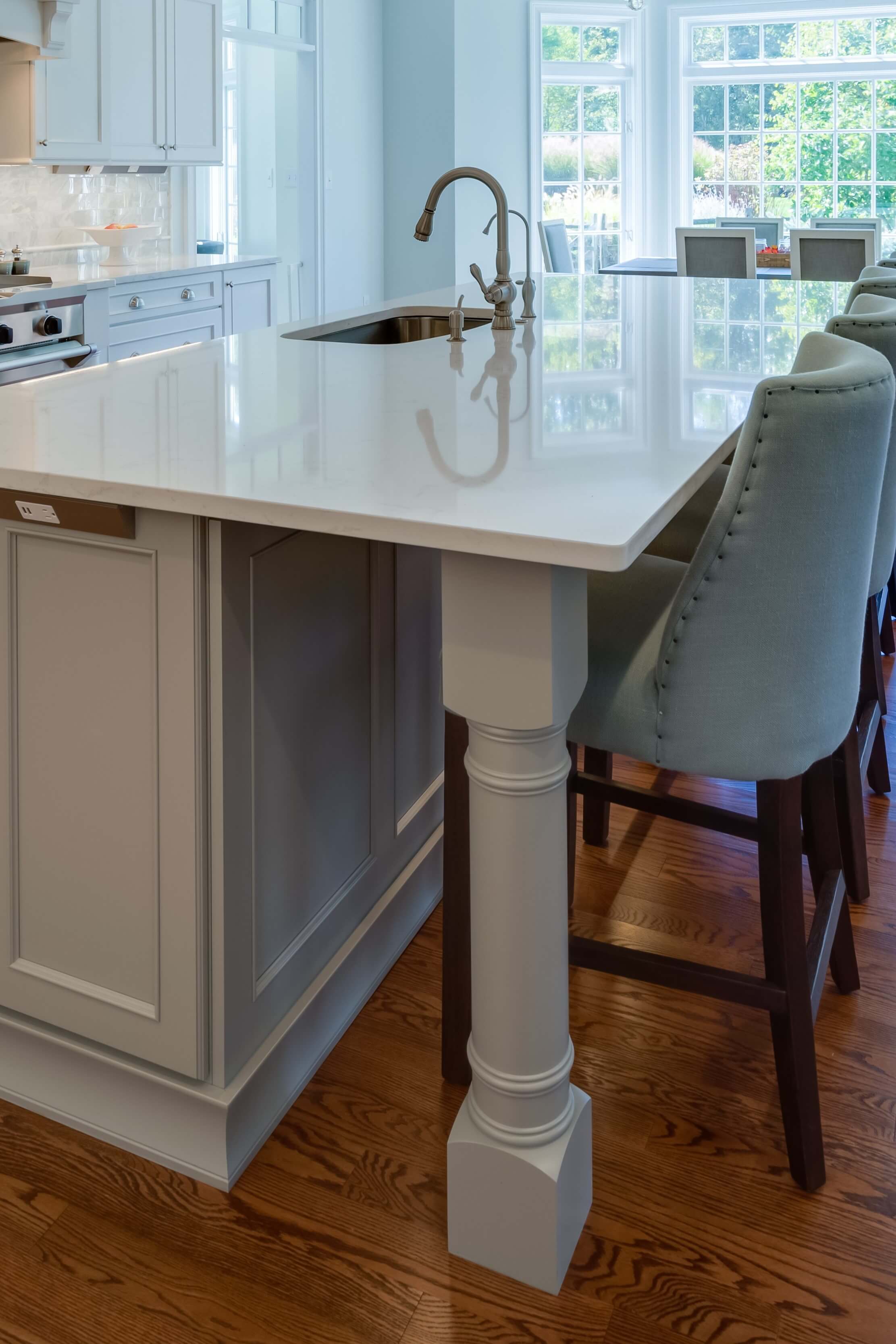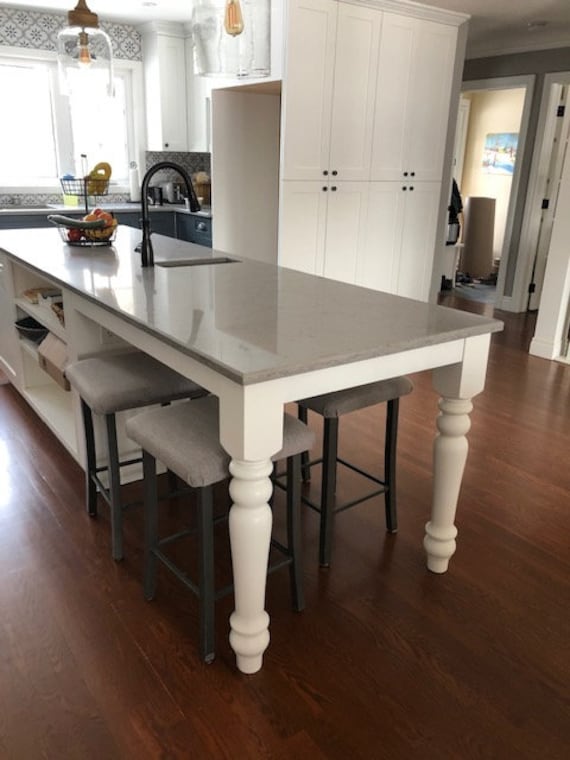How to Mount a Kitchen Island Leg for Maximum Security and Design
How to Mount a Kitchen Island Leg for Maximum Security and Design
Blog Article
The Value of a Sturdy Kitchen Island Leg in Developing a Practical Food Preparation Area
A strong kitchen area island leg offers as a basic element in establishing a practical cooking atmosphere, giving essential assistance for both the counter top and numerous kitchen tasks. As kitchens advance into multifunctional areas for food preparation, dining, and socializing, the option of products and design considerations for island legs becomes significantly vital.
Benefits of Sturdy Island Legs
Offering vital support, strong cooking area island legs play an essential function in improving the performance and durability of kitchen islands - kitchen island leg. These legs not only bear the weight of the countertop and any kind of extra things positioned on the island, however additionally add to the overall stability of the structure. A well-supported cooking area island makes certain that it continues to be upright and practical, even under heavy use, which is specifically crucial in active kitchen area environments
Additionally, tough island legs can enhance the aesthetic appeal of the cooking area. They offer a strong structure that can match different design styles, from contemporary to standard. This convenience enables house owners to personalize their cooking area islands according to personal taste while ensuring that the architectural stability stays uncompromised.
In addition to their supportive duty, robust kitchen island legs can additionally enhance safety. Ultimately, investing in durable kitchen island legs is crucial for a useful and visually pleasing cooking location.
Materials for Kitchen Island Legs
When picking materials for cooking area island legs, sturdiness and visual appeal are important elements to think about,. One of the most typical products include wood, steel, and engineered wood, each offering special advantages.
Wood, such as maple, oak, or cherry, is a timeless choice as a result of its toughness and ageless elegance (kitchen island leg). It can withstand significant weight and is immune to wear, making it excellent for high-use cooking area atmospheres. Additionally, hardwood can be stained or repainted to enhance different kitchen area designs
Steel legs, often crafted from stainless-steel or functioned iron, supply a industrial and contemporary appearance. They are exceptionally strong and can support significant loads while being resistant to wetness and heat, which is advantageous in a cooking location. Metal legs can likewise be quickly cleansed, improving their practicality.

Style Factors To Consider for Security
The choice of products for cooking area island legs directly influences the design considerations for stability. When creating a kitchen area island, it is paramount to examine the weight-bearing ability of the selected materials. Heavier materials, such as solid wood or metal, generally offer greater stability, specifically under the stress of everyday use.
Additionally, the leg layout need to incorporate appropriate geometry to boost stability. A broader base raises the support area, minimizing the threat of tipping or wobbling. Consideration needs to additionally be provided to the height of the legs; disproportionate leg sizes can bring about discrepancy, endangering the general stability of the island.
Furthermore, the circulation of weight across the island is critical. Making sure that the leg placement aligns with the heaviest parts, such as appliances and countertops, will further boost security.
Maintenance Tips for Long Life

Depending on the product of the legs-- whether wood, steel, or composite-- ideal cleansing methods need to be employed. Metal legs may call for a light polish to avoid corrosion and keep their appeal.
In addition, tightening up bolts and screws consistently can ensure stability and avoid tottering. Think about enhancing the legs with additional brackets or supports Discover More Here to improve sturdiness if the kitchen area island experiences heavy usage. Lastly, applying a protective coating or sealer can safeguard against moisture and stains, prolonging the lifespan of the legs. By adhering to these maintenance suggestions, home owners can guarantee their kitchen area island legs stay robust and practical for several years to come.
Selecting the Right Leg Design
Routine maintenance ensures that kitchen island legs continue to be functional and sturdy, however choosing the right leg design is just as essential for both looks and assistance. The option of leg design can substantially influence the overall style and consistency of your cooking area.

Functionality is an additional vital aspect. For example, thicker legs or those with a tough base can support much heavier kitchen counters and equipment, boosting the island's utility. On the other hand, slim legs might produce a ventilated appearance, appropriate for lighter layouts however possibly less helpful.
Verdict
In recap, the significance of tough kitchen island legs can not be overstated in the development of a useful food preparation area. These legs provide vital assistance, boost security, and add to his explanation the overall aesthetic of the kitchen area. By very carefully selecting suitable products and styles, in addition to applying correct upkeep practices, the longevity and description performance of cooking area islands can be made sure. Ultimately, purchasing durable island legs is basic to attaining a safe and efficient cooking environment.
A strong kitchen area island leg serves as a basic part in developing a practical food preparation atmosphere, offering necessary support for both the counter top and different kitchen tasks.Giving essential support, durable kitchen area island legs play a pivotal duty in boosting the performance and toughness of kitchen area islands. Eventually, spending in tough kitchen area island legs is important for a functional and aesthetically pleasing cooking location.
Factor to consider should additionally be given to the elevation of the legs; disproportionate leg sizes can lead to discrepancy, compromising the total security of the island.
Wooden legs provide heat and a classic appearance, while metal legs offer a modern-day and commercial feel.
Report this page